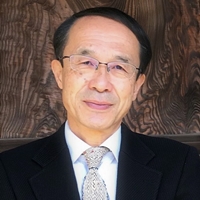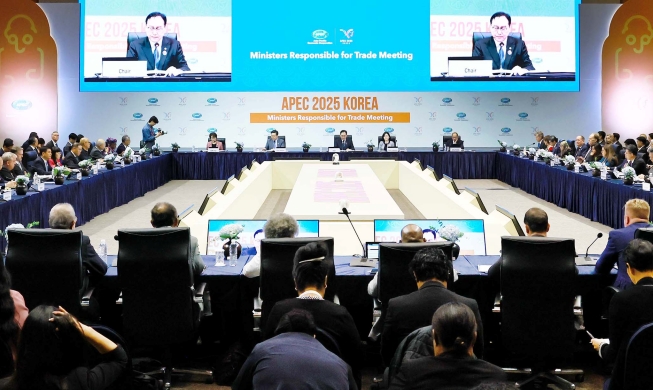
By Yasuto Takeuchi
Researcher of modern Japanese history
Opened in March last year in central Tokyo, the Industrial Heritage Information Centre hosts an exhibition that breaks the promise Japan made to UNESCO by distorting history. While praising Japanese industrialization during the Meiji era (1868-1912), the display fails to include all of the period's history including Japan's use of forced labor and international relations. Through the case of Hashima (Battleship) Island, Japan is desecrating the honor of the victims by denying its use of forced labor. The Japanese government assigned the National Congress of Industrial Heritage to handle the exhibition and related services.
In July 2015, when UNESCO designated 23 items from the Meiji industrial revolution as World Heritage, the Japanese government pledged "to build a center to recognize the reality that workers, including Koreans, were mobilized against their will to labor in severe conditions and to honor those who died there." Yet Tokyo has completely gone back on its word.
Of the center's three zones, the third houses an exhibition denying Japan's history of forced labor. Nothing there shows Japan's past use of forced labor, abuse and no salary, not to mention the victims. The display merely quotes a former island resident as saying, "Hashima Island had a good community with good conditions," adding, "No forced labor or discrimination occurred."
A booklet at the center quotes a former Japanese manager of Chinese workers at the Miike coal mine as saying Korean workers were employed as a group and suffered no discrimination. But Lester Tenney, a former prisoner of war (POW) of Japanese POW camps who survived the Bataan Death March in the Philippines, said in a journal, "Some of the Allied POWs were starved to death or killed." No testimonies from Korean, Chinese or POWs from Allied countries are there.
The exhibition shows the uniform of Jeong Chung-hae, who was forced to work at Hiroshima Toyo Industrial, a company related to the Miike coal mine. "Most of the workers were forced to be there," he said. "We wore work uniforms under the dishonorable name of conscription and were treated like slaves." Yet these comments are nowhere to be found here.
The center ignores how the Korean workers were not paid, instead displaying a wage statement and envelope of Taiwanese workers at a shipyard in Nagasaki as a proof of no discrimination since non-Japanese workers were also paid. Kim Sun-gil, a Korean victim forced to work on the island, filed a lawsuit saying he was forced to work and save his wages. Around 6,000 Koreans were forcibly sent to work at the shipyard, with a combined JPY 860,000 in wages spanning 3,400 cases not paid. At a steel mill in Yawata, the amount of JPY 300,000 over 3,500 cases were kept as deposits. The money today would be worth billions of JPY, another glaring truth ignored by the exhibition.
From 1939-45, Japan forced approximately 800,000 Koreans to work under the name of "mobilized labor" through collective and government recruitment or conscription, but the manner to get the workers involved deception, force or kidnapping. The center’s zone for "releasing mobilization documents" shows related materials but offers no concrete explanation of the truth.
Mitsubishi developed the coal mine on Hashima as a subsidiary of the Takashima coal mine. On the island, managers hired and supervised groups of 300-400 workers, using violence to manage them. Demanding better conditions, workers went on strike and even attacked a police station and a coal mine office.
In 1907, a recruiter deceived miners by calling the coal mine "a paradise" and promising a commission of JPY 3 per applicant. The company even encouraged gambling by miners by opening a brothel. This led to miners being robbed of their freedom under the advance payment system, which deducted pay from wages and caused many workers to get addicted to gambling.
The Meiji era saw the Japanese government boost coal production to expand the scope of war to China, Southeast Asia, and the Pacific regions. Under the name of "industrial patriotism," or boosting industry to develop the country, workers were robbed of their rights amid militarization, being forced to dig for coal at huge risk to their lives. At the Takashima coal mine, miners were forced to work there while risking their lives. Even women and teens worked there in violation of a ban at the time.
From 1939-45, around 4,000 Koreans were sent to Takashima and another 1,000 to Hashima. The late Choe Chang-seop, who was sent to Hashima from Iksan, Jeollabuk-do Province, recalled his life there in his autobiography with passages like "a prison without bars"; "I was always starved and drenched in sweat"; "I suffered malnutrition, had leg cramps and collapsed a few times a day while digging for coal"; and "We faced severe torture if caught running away." He added that bloody flesh could be found on rubber rope used for whipping. About 400 Chinese were also forced to work, and some of them died.
In 1946, the Japanese Ministry of Health released a list of 1,299 Koreans who had been forced to work in Takashima. The amount of unpaid wages, ranging from JPY 100 to JPY 500 per person, was a combined JPY 220,000 at the time, a sum that is worth billions of JPY today.
For the victims of forced work, Hashima is a "prison" and "hell." The National Congress of Industrial Heritage, which built the Tokyo center, insists that Hashima was a nice community in denying the truth behind the violent management and forced labor that occurred there.
The UNESCO Constitution says, "It is the minds of men that the defences of peace must be constructed," emphasizing the importance of the intellectual and spiritual solidarity of humans. World heritage exist for peace and solidarity that allow people to connect with each other in going beyond nation and religion and fosters a spirit of philanthropy and tolerance. All of these form the basis for the intellectual and spiritual solidarity of humans.
The Tokyo center's exhibition considers the Korean position as false, an extremely nationalistic and insensitive stance. This fails to convey a spirit of philanthropy and tolerance and is instead Japan's denial of history to justify its war crimes and colonial rule of Korea and not admit to using forced labor in the past. Consciousness without reflection on history is incompatible with the spirit of world heritage and taints the dignity of the forced work victims.
Reconsideration is needed of the concept of establishing peace for world heritage. The information center should serve as a venue for Japan to admit to its use of forced labor and remember the victims, as well as convey a spirit of philanthropy and tolerance and build the defensive walls of peace in people's minds. The Japanese government should get rid of its nationalistic and intolerant attitude and improve the content of the exhibition.
Yasuto Takeuchi since the 1980s has researched forced labor and worked at the Japan-Korea Joint Action for Legislation to Compensate Korean Victims of Forced Labor since 2005. He published many books on the topic, such as "Q&A on Japan's Industrial Revolution Heritage and Forced Labor in the Meiji Era."
Translated by Korea.net staff writer Yoon Sojung
